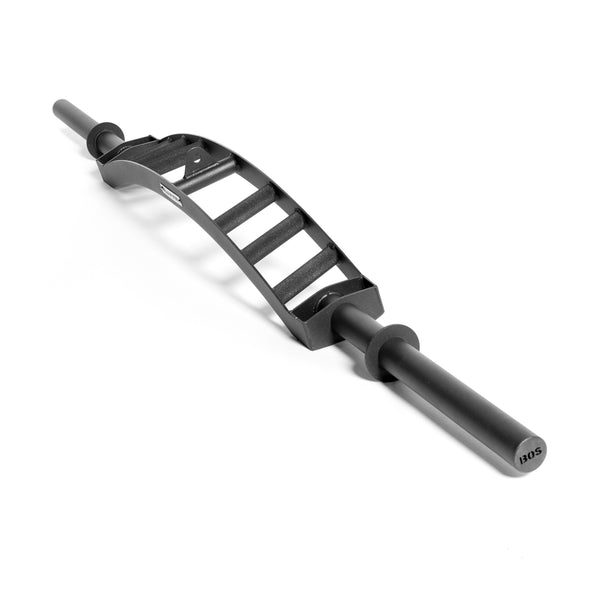The lat pulldown is a fundamental exercise in any well-rounded strength training routine. It primarily targets the latissimus dorsi muscles, which are responsible for the impressive V-shape that many fitness enthusiasts strive to achieve.
However, some individuals have reported an unexpected sensation during lat pulldowns – feeling it in their forearms. In this article, we will answer the question, “Does lat pulldown work forearms?” and delve into the specific forearm muscles that come into play.

The Lat Pulldown: A Quick Overview
Before we delve into the intriguing world of forearm engagement during lat pulldowns, let's briefly revisit the exercise itself.
The lat pulldown is typically performed using a cable machine with a lat pulldown bar. Here's a step-by-step guide to performing the exercise:
- Sit at the lat pulldown machine and secure your thighs under the provided pads.
- Grip the bar with your hands slightly wider than shoulder-width apart, with your palms facing forward (pronated grip).
- Maintain an upright posture with your chest up and shoulders relaxed.
- Pull the bar down towards your upper chest while focusing on squeezing your shoulder blades together.
- Slowly return the bar to the starting position, maintaining control throughout the movement.
Forearm Muscles
Now, let's dive into the specific forearm muscles that come into play during lat pulldowns:
Brachioradialis: This muscle is located on the forearm and plays a significant role in flexing the elbow joint. When you grip the lat pulldown bar and pull it down, especially with a pronated grip, the brachioradialis is actively engaged to stabilize the elbow joint.
Flexor Carpi Radialis: This muscle is responsible for wrist flexion, which occurs when you pull the bar down towards your chest. It plays a supporting role in maintaining grip and controlling the bar's descent.
Flexor Digitorum Profundus: This muscle assists in finger flexion. While not as prominently engaged as the brachioradialis, it contributes to the overall forearm engagement, especially when maintaining a firm grip on the bar.
Understanding Forearm Engagement
Feeling the lat pulldown in your forearms can be attributed to various factors, some of which we will explore in more detail:
Technique: Incorrect form is often the culprit when it comes to unexpected muscle engagement during exercises. Leaning back excessively or pulling the bar at an incorrect angle can put more work on the forearm muscles than intended. Ensuring that you maintain an upright posture and pull the bar straight down can alleviate this issue.
Grip Strength: Your grip on the bar can significantly impact how your forearms are recruited during the exercise. A tight grip can cause the forearm muscles to fatigue prematurely. Loosening your grip slightly and focusing on pulling from your elbows can help in correctly activating the intended muscles in the back.
Weight Selection: Lifting a weight that's too heavy for your current strength level can lead to increased forearm engagement. At a certain point, the weight will be so heavy that your forearm muscles can’t maintain your grip onto the bar. It's essential to choose a weight that allows for proper technique and gradually increase it as your strength improves.
Grip Variations: The choice of grip during lat pulldowns can influence which muscles are targeted. While the pronated grip is the most common, experimenting with different grip positions, such as wide-grip, neutral, or supinated (palms facing you), can shift the emphasis of the exercise away from the forearms.
Final Thoughts
Feeling your forearms during lat pulldowns isn't necessarily a cause for concern. It can be attributed to a combination of factors, including form, grip strength, weight selection, and grip variations. To maximize the effectiveness of the exercise and minimize forearm engagement, prioritize proper form, and consider adjusting your grip or using straps if necessary.




